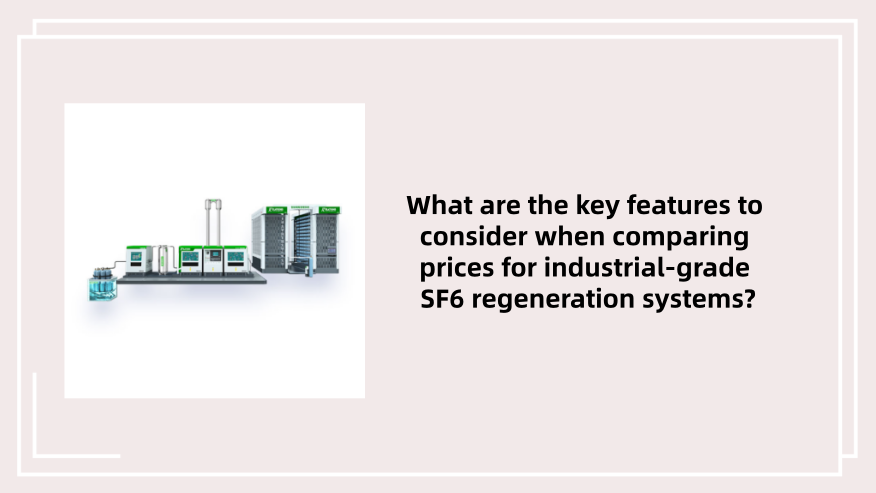
- SF6 Relations
- 2025-10-15
When comparing prices for industrial-grade SF6 regeneration systems, key features focus on balancing upfront costs with long-term value, compliance, and operational efficiency—ensuring you don’t overpay for unnecessary specs or underinvest in critical functions that could lead to higher costs later.
1. Processing Capacity & Daily Throughput
Processing capacity (measured in kg of SF6 processed per day) is the most direct feature driving upfront price, and it must align with your facility’s actual needs.
- Higher capacity systems (e.g., 200 kg/day for large power plants) cost significantly more than low-capacity models (e.g., 50 kg/day for small manufacturing facilities).
- For price comparison: Buying a system with excess capacity wastes money on unused performance. Conversely, a system that’s too small will force you to keep purchasing new SF6, erasing any upfront savings. Always match capacity to your daily SF6 usage (e.g., from switchgear or transformer maintenance).
2. Purity Output & Compliance Certifications
Purity output and regulatory compliance are non-negotiable features that directly impact both cost and risk—cheap systems often cut corners here.
- Purity level: Industry standards (e.g., ISO 14532) require regenerated SF6 to reach ≥99.995% purity to avoid equipment damage. Systems with consistent high purity typically cost more.
- Certifications: Look for compliance with regional regulations (e.g., EU F-Gas Regulation, U.S. EPA standards) and quality certifications (ISO 9001, CE). Uncertified systems may be 20–30% cheaper upfront but can lead to fines (e.g., up to €100,000 under F-Gas) or operational shutdowns.
- For price comparison: A “lower-cost” system without certifications is a hidden expense—factor potential fines into your total cost assessment.
3. After-Sales Support & Maintenance Design
The system’s design for maintenance and the supplier’s after-sales support directly influence long-term costs, which often exceed upfront price.
- Warranty length: Reputable systems offer 3–5 year warranties, while budget options may only cover 1 year. Longer warranties reduce unexpected repair costs.
- Maintenance accessibility: Features like modular filters, easy-to-access components, or digital monitoring (for predictive maintenance) lower labor and part replacement costs. Cheap systems often have hard-to-replace parts or require specialized technicians.
- Spare part availability: Suppliers with global spare part networks ensure minimal downtime. Smaller brands may have delayed part deliveries, costing you lost productivity.
- For price comparison: Calculate 5-year maintenance costs (e.g., filter replacements, service fees) for each quote— a $120,000 system with low maintenance costs may be cheaper than a $100,000 system with high upkeep.
4. Integration Compatibility with Existing Equipment
Compatibility with your current setup avoids expensive modifications, making it a critical feature for price comparison.
- Check if the system works with your existing SF6 storage tanks, switchgear models, or data monitoring platforms (e.g., SCADA systems for power grids).
- Incompatible systems require custom piping, adapters, or software upgrades—adding $10,000–$30,000 in unplanned costs.
- For price comparison: Ask suppliers to confirm compatibility in writing. A slightly pricier system that integrates seamlessly is more cost-effective than a cheap one needing modifications.
5. Energy Efficiency
Energy consumption directly impacts monthly operational costs, so efficiency is a key feature to weigh against upfront price.
- Energy-efficient systems use 15–30% less power (measured in kW/h) than older or budget models. For example, a system that runs 8 hours/day could save $500–$1,000 annually on electricity.
- Look for features like variable-speed compressors or auto-shutdown modes, which reduce energy use during low-demand periods.
- For price comparison: Calculate annual energy savings over the system’s 5–10 year lifespan. A $130,000 efficient system may offset its higher upfront cost with energy savings in 2–3 years.
Leave a Reply